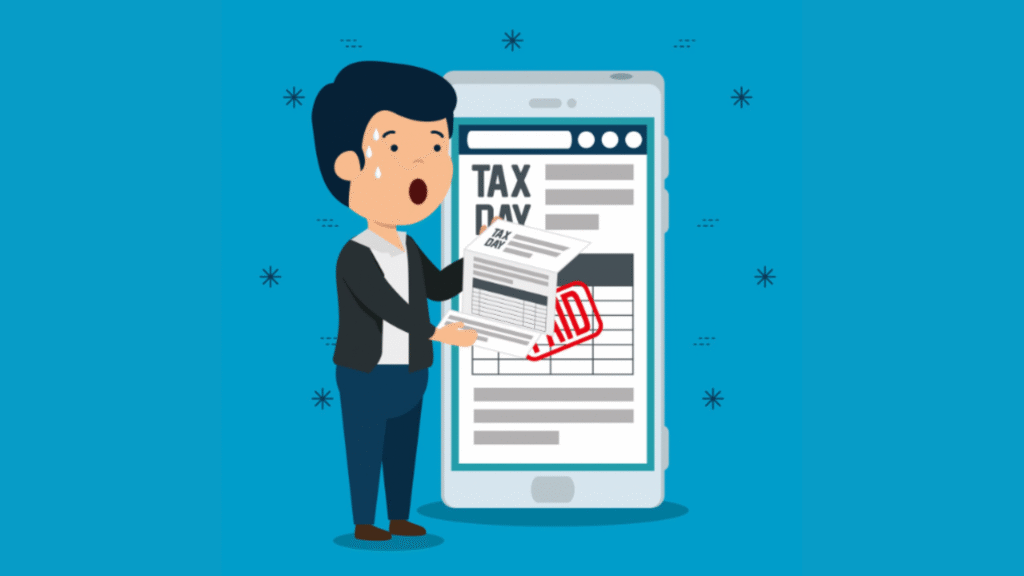For businesses registered under GST, filing the income tax return (ITR) can be a complex process if you are unsure how to handle GST turnover calculation for income tax. Proper reporting of turnover is essential not only for compliance but also to ensure that your taxable income is computed correctly. In this guide, we walk you through the ITR filing process for GST dealers, offering practical advice on documentation, turnover calculations, accounting adjustments, and common pitfalls to avoid.
Understanding GST Turnover and Its Impact on ITR Filing
What Is GST Turnover and Why Does It Matter?
GST turnover is essentially the total value of all taxable supplies, exempt supplies, exports, and inter-state supplies that your business makes during a financial year. However, it’s important to note that not every element of this turnover is considered while filing your GST business income tax return. Knowing which parts are applicable and which are not is crucial to accurately computing your taxable income and avoiding errors in reporting.
GST Turnover vs Taxable Income: Clearing the Confusion
A common misunderstanding among business owners is equating GST turnover with taxable income. While turnover represents your gross sales or total supply value, taxable income is what remains after you deduct legitimate expenses, depreciation, and adjust for input tax credits (ITC). Accurate taxable income calculation from GST turnover ensures that you neither overstate nor understate your liability, helping you stay compliant and avoid penalties.
How GST Registration Influences Tax Reporting Requirements
Being a GST-registered business comes with specific obligations. One of the most important things is reporting your turnover correctly while filing your ITR. Depending on the nature of your business and accounting practices, you will need to select the appropriate ITR form for GST registered business—commonly ITR-3 for businesses maintaining full accounting records or ITR-4 for those opting for presumptive taxation. Incorrect reporting can lead to scrutiny, tax audits, or fines, so careful preparation is key.
Dispelling Common Misconceptions About GST Turnover Reporting
- Many business owners mistakenly believe GST turnover equals net profit, which is not the case.
- Input tax credits must be adjusted before determining taxable income.
- Exempt supplies and other non-taxable components may not form part of the turnover considered for income tax purposes.
Documents You Need for ITR Filing with GST Turnover
GST Returns and Statements
For a thorough and error-free income tax return GST business filing, you should collect copies of all relevant GST returns, such as GSTR-1, GSTR-3B, and annual filings. These documents form the backbone of your reporting and help reconcile turnover figures.
Financial Records Including Bank Statements
Accurate reporting requires a well-maintained financial trail. Gather your bank statements, ledgers, cash flow reports, and other records to cross-check and support the turnover and expense claims in your return.
Organizing Invoices for Purchases and Sales
A systematic approach to organizing your invoices simplifies the process of how to file ITR online GST. Well-maintained invoices ensure that your purchase and sales data can be uploaded efficiently, reducing the chances of mistakes and omissions during submission.

How to Calculate Taxable Income from GST Turnover
Converting Turnover Into Taxable Income
Start by reviewing your total GST turnover. From this, subtract non-taxable sales, exemptions, and allowable business expenses to arrive at the net business income eligible for taxation.
Claiming Legitimate Deductions
Only expenses that are properly documented and incurred wholly for business purposes should be claimed while preparing your ITR filing with GST turnover. Unsupported expense claims can invite audits and penalties.
Adjusting for Input Tax Credit (ITC)
Properly managing and adjusting input tax credits is critical in ensuring that your taxable income is computed without discrepancies. Inaccurate adjustments can result in compliance issues during your GST compliance ITR filing.
Accounting Methods: Cash vs Accrual
Your accounting method—whether cash-based or accrual-based—can affect how you recognize income and expenses. Depending on your method, adjustments may be required to reconcile timing differences and reflect the correct taxable income.
Choosing the Right ITR Form for GST-Registered Businesses
Filing ITR-3 for Detailed Accounting
If you maintain detailed books of accounts, including ledgers and supporting documentation, ITR-3 is the ideal choice. It allows you to report business income comprehensively and claim eligible deductions.
Filing ITR-4 Under the Presumptive Taxation Scheme
Small businesses or self-employed individuals with simpler financial records can opt for ITR-4. This form allows you to declare income based on a predetermined percentage of your turnover, simplifying compliance while ensuring tax obligations are met.
How to Decide Between Presumptive Taxation and Regular Accounting
Businesses with lower turnovers and fewer transactions may benefit from presumptive taxation due to its ease and reduced paperwork. On the other hand, larger businesses with more complex financial activities should use detailed accounting methods to ensure accuracy in GST turnover calculation for income tax.
A Step-by-Step Guide on How to File ITR Online GST
Accessing the Income Tax E-Filing Portal
To begin the ITR filing process for GST dealers, log into the official income tax portal using your valid credentials. Verify your account to access the forms and submission tools required.
Entering GST Turnover Details Correctly
Before submitting, cross-check your turnover figures against GST filings to ensure accuracy. Errors in reporting can result in unnecessary scrutiny and potential penalties.
Uploading Supporting Documents
Prepare your financial documents—balance sheets, invoices, and bank statements—in the prescribed format and upload them during the filing process. Well-organized files make the submission process smoother and more efficient.
Verification and Final Submission
Once all details are entered, review the information carefully. Sign digitally where required and submit your return before the deadline to avoid late fees or other compliance issues.
Common Errors to Avoid During ITR Filing with GST Turnover
Misreporting Turnover Figures
Errors in reporting GST turnover can trigger audits and reassessment notices. Always reconcile turnover figures with your GST returns before submitting the final ITR.
Incorrect Claims for Expenses
Avoid claiming expenses that are not supported by proper documentation. Only genuine, verifiable expenses should be included to prevent tax complications.
Missing Disclosures and Schedules
Incomplete forms or missing schedules can result in rejection or delays in processing your income tax return or GST business filing.
Post-Filing Compliance and Maintaining Records
Keeping Accurate Books of Accounts
Consistent bookkeeping practices ensure that future GST compliance ITR filings are smooth and error-free, helping you avoid complications during audits.
Preparing for Tax Scrutiny
Maintain organized records so you can respond quickly if authorities raise queries or issue notices.
Planning Advance Tax Payments Based on GST Turnover
Using your turnover data, estimate your tax liability in advance. This helps you plan for advance tax payments and avoid penalties for late payments.
Conclusion
Filing ITR as a GST-registered business doesn’t have to be overwhelming. By understanding the nuances of GST turnover calculation for income tax, selecting the correct ITR form for GST registered business, and following best practices for GST compliance ITR filing, you can navigate the process with confidence. Accurate record keeping, proper adjustments for input tax credits, and thorough documentation will ensure your GST business income tax return is error-free and submitted on time. By following this guide, you’ll not only fulfill statutory requirements but also build a strong foundation for long-term financial health




I do not even know how I ended up here but I thought this post was great I dont know who you are but definitely youre going to a famous blogger if you arent already Cheers